"Smart greenhouse": automation for greenhouses
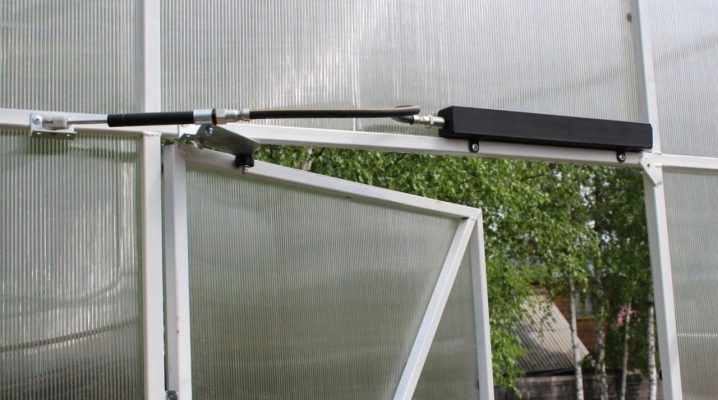
Many adherents of gardening, engaged in the cultivation of various crops, begin with the construction of an ordinary greenhouse. After planting the seeds, various troubles for the maintenance and preservation of crops begin. If the greenhouse is small, then it will not cause much concern. But what about those who have a massive structure built on the site that requires almost constant supervision? Our material will tell you about the features of "smart greenhouses", which can significantly facilitate the work of gardeners.
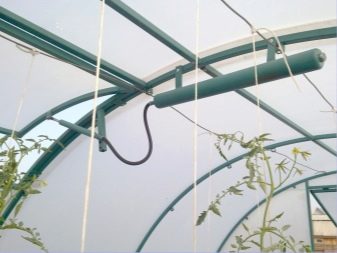

What it is?
Many grow greenhouse vegetables for the sake of the process itself, because it is nice to feel that these products are practically made by hand. Some owners of summer cottages with great pleasure would take on such a matter even more seriously, but only there is neither the strength nor the time for this. An automated system that controls irrigation, ventilation, fertilizer supply is still the ultimate dream of some summer residents. In fact, all dreams are already working successfully in real life.
Due to the fact that progress is developing non-stop, the "smart greenhouse" exists in reality. The development of the construction market and related technologies has led to the fact that an automatic machine can control all processes today.
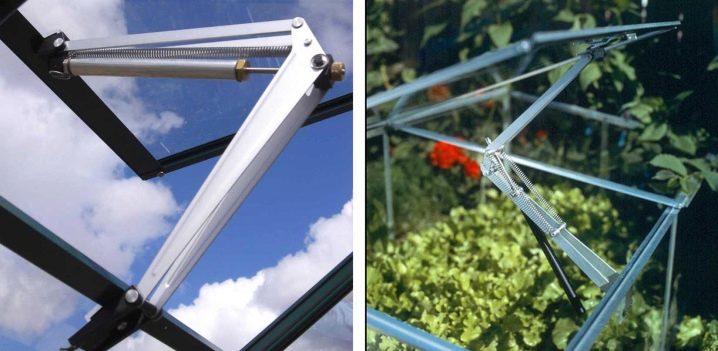
Actually, why automation in a greenhouse? It is enough to take an ordinary greenhouse as an example and consider what processes are taking place there. Considering that climate control is being carried out there properly, but this is done, rather, whenever possible, although on a daily basis.
With the appearance of the first rays of the sun, the temperature in the greenhouse begins to rise sharply. This is a very favorable time for plants. The only thing is that at the same time the temperature difference between soil and air is growing. In this regard, the roots, while remaining cold, cannot fully supply the sprouts with moisture. This phenomenon does not have a very beneficial effect on the growth of the ovary.
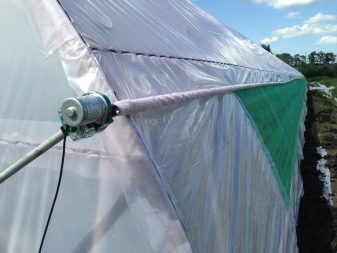
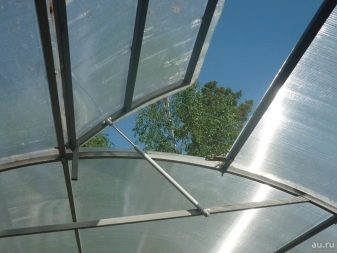
Ventilation is even worse. Usually, the owner goes to ventilate the greenhouse when the temperature inside exceeds 40 ° C. With the opening of the doors and vents, the draft, together with the warm air, carries away the remnants of moisture, creating, in fact, a desert climate. This creates an ideal breeding environment for pests and diseases.
By the evening, when the temperature regains its balance, the plants will return to normal. But if you compare the results of the harvest, then there will be more vegetables from the automated greenhouse, and they will look much prettier. It turns out that the main task of a "smart" greenhouse is to provide a comfortable microclimate for plants.
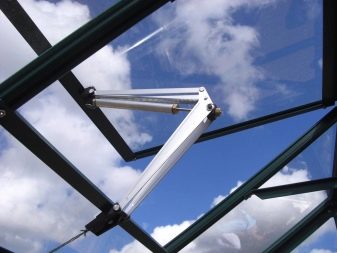
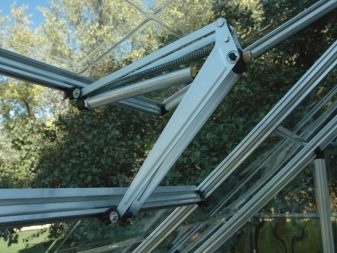
Peculiarities
This work of "garden" art appeared quite a long time ago and has enjoyed well-deserved popularity for many years. Only pensioners can afford to spend all the time at their summer cottage. The rest of the categories of people, to the extent of their employment, can visit their gardens only periodically.
The automatic greenhouse is a unique design designed to make the work of gardeners as easy as possible. And you can make any greenhouse "smart". It all depends on the ingenuity of the gardener and the use of modern technology.

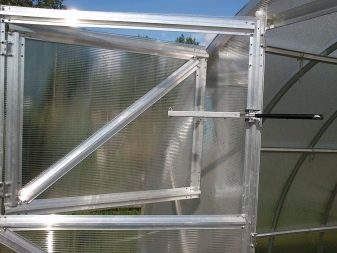
A “smart” greenhouse for possessing its “reasonable” title must necessarily meet the following characteristics:
- temperature regulation inside the greenhouse should be automatic using an air sensor;
- mandatory presence of a drip irrigation system;
- the soil in the greenhouse must be restored without human assistance.
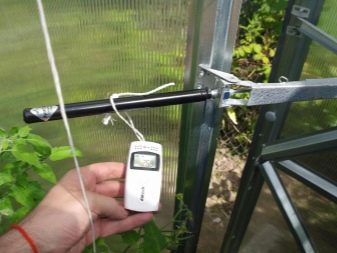
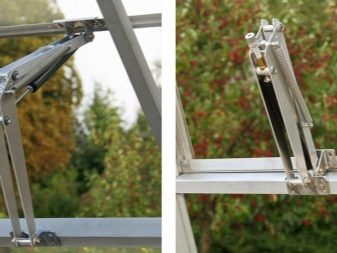
There is no great need for an automated greenhouse to be crammed top to bottom with the latest in modern production systems. Equipping a greenhouse can be done with minimal cost. The main aspect is the consistent functionality of all installed systems. This ensures maximum efficiency is achieved.
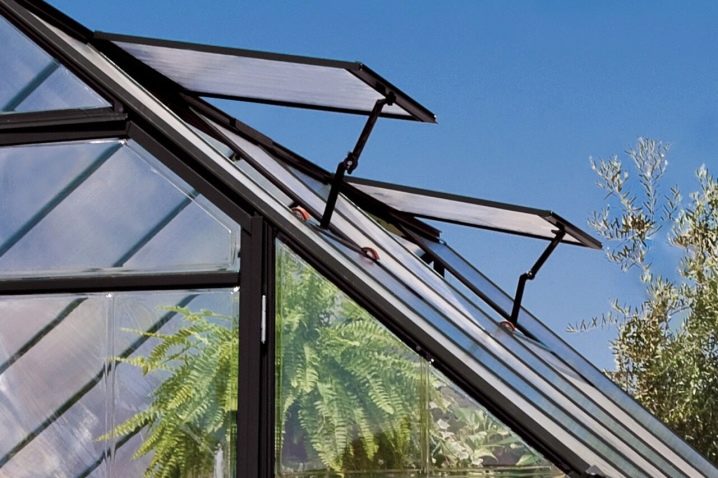
Types and designs
All the benefits of your own greenhouse can be seen the moment fresh and tasty vegetables appear on the table. Moreover, this happens every day, and not only on warm summer days. No need for canning and freezing for future use. The greenhouse gives everything fresh, natural and its own.
To choose a high-quality structure, you need to take into account the parameters of the terrain and, of course, decide on the choice of the culture to be grown. It is difficult not to get lost in the variety of options offered, because today there is a large assortment of models on the market, and one is better than the other. And modern dacha craftsmen offer their own inventions, much more perfect than some factory developments. So where should you choose?
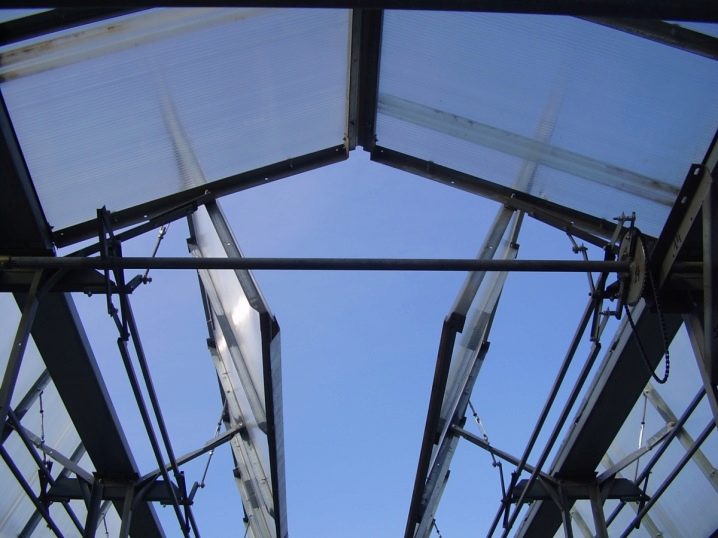
First you need to decide what the greenhouse is for:
- what will grow in it and in what volumes;
- the design will be used only in summer or all year round;
- dimensions of the structure;
- the number of vegetables grown (for personal use or also for sale);
- the degree of automation of the greenhouse, etc.

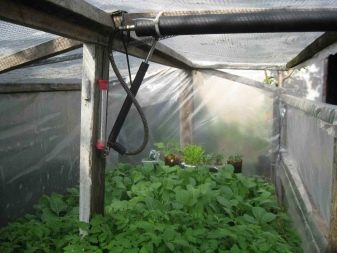
Mainly on the market are glass greenhouses on a metal frame in the form of a house, as well as interesting arched structures made of polycarbonate. It is easier to bend a sheet of this material in the form of an arch than to cut, in addition, the factor of the tightness of the structure is important here. Before making a choice, it is necessary to consider all the disadvantages and advantages of these greenhouses.
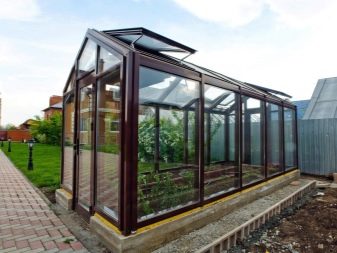
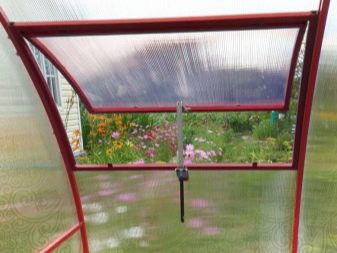
Arch-shaped
Pros:
- small plane of reflection, so more sunlight enters;
- a large amount of free space - the plants have room to grow in length;
- the design has a nice appearance;
- simplicity of construction and ease of transportation;
- the ability to add new segments to expand the cultivated area.
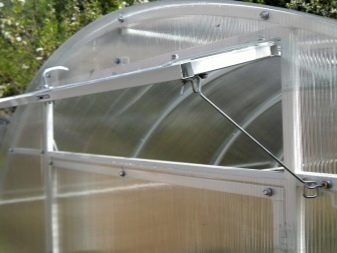
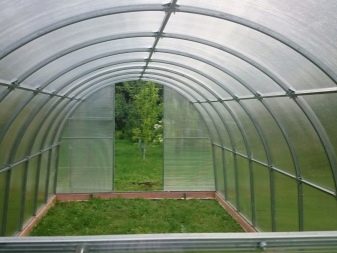
Cons of the design:
- snow practically does not roll off such a greenhouse, and there is a possibility that the structure may bend and break;
- if improperly assembled, the tightness can be broken and, in addition to water, harmful insects can enter the greenhouse;
- in case of insufficiently reliable fastening to the foundation, the structure can be demolished by the wind.
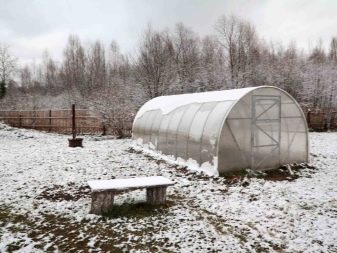

Greenhouse house
Advantages:
- such a structure is easy to do with your own hands;
- snow on the roof does not linger, so do not worry about deflections;
- in a greenhouse of this type, it is easier to install various automation systems;
- the choice of materials for construction is quite diverse;
- there is the possibility of further improving the appearance.
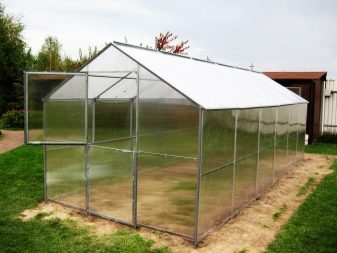
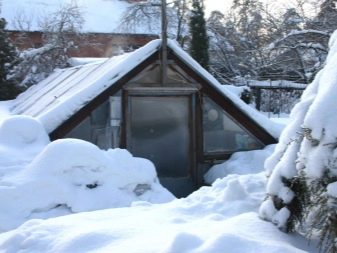
Disadvantages:
- the greenhouse has a strong degree of reflection due to the flat surface, so there may not be enough solar heat for the plants;
- in the future, if an expansion of the area is required, it will be difficult to do this;
- a large number of components that require constant monitoring;
- the roof of such greenhouses is quite heavy, therefore, when erecting a structure, a powerful and solid foundation is needed.


In addition to traditional forms, you can consider other types of greenhouses. It all depends on the convenience of work and the requirements of the plants themselves. For example, cucumbers need a wide area, but tomatoes need height.
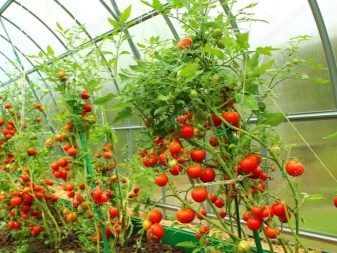
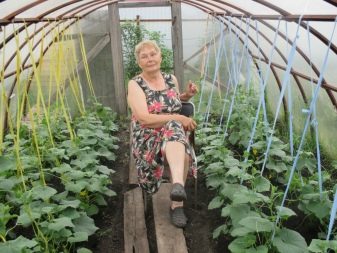
A greenhouse called "Clever" is in great demand among summer residents today.Due to the fact that the design of this greenhouse is very convenient and durable, it will serve for a very long time. But most importantly, what makes this greenhouse different from others is that it has an opening roof.
You can group all the advantages of "Clever Girl" as follows:
- reliability and simplicity of design;
- practical type of roof;
- easy adjustment of humidity and temperature parameters.

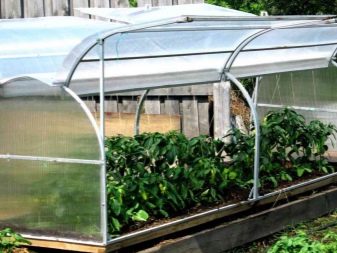
The roof is controlled by a special lift on casters, the use of which does not require special skills. The greenhouse can be left uncovered for the winter. Due to this, the soil will be saturated with moisture, preventing soil freezing and possible deformation of the roof.
In addition, this "smart" greenhouse is able to independently create the necessary microclimate inside. The name of the greenhouse itself suggests that the quality is at its best. Well, the indisputable advantage is the low cost, which will allow you to recoup the costs in a short time.
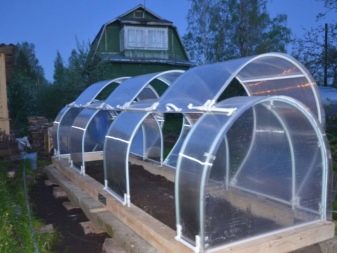

You can create a "smart" greenhouse with your own hands. The automation of the greenhouse will help to carry out the Arduino control system, thanks to which it is possible to constantly monitor the main processes. Arduino automation notifies the owner of the ventilation system, humidity, power outages and other functions. Data can be displayed on a computer or tablet display, or notification can be carried out using light signaling.
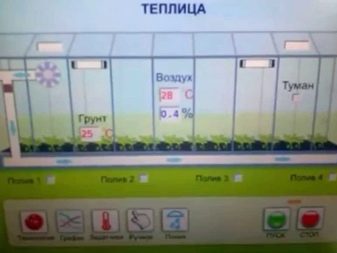
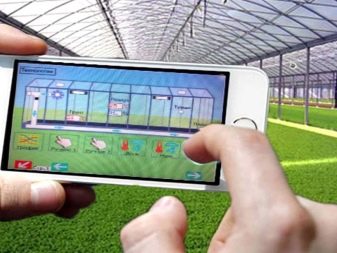
The autonomous operation of a self-made greenhouse is achieved by installing a set, which includes electrical circuits, closers with temperature sensors and modules for various purposes.
The basic design of a self-made "smart" greenhouse allows you to automatically perform the following functions:
- control and regulation of the temperature inside the greenhouse;
- air humidity monitoring;
- moistening the soil;
- lighting plants.

Best options
In most cases, summer residents give preference to foreign samples of production, believing that foreign manufacturers produce better quality products. In fact, domestic counterparts in quality and functionality are in no way inferior to them.
The "smart" greenhouse according to Kurdyumov made of polycarbonate provides for the use of a drip irrigation system and automatic ventilation without the use of electricity. It is equipped with an automatic ventilation system to provide a comfortable climate conducive to crop growth.
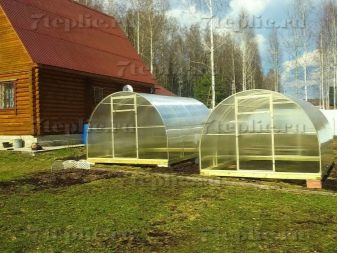
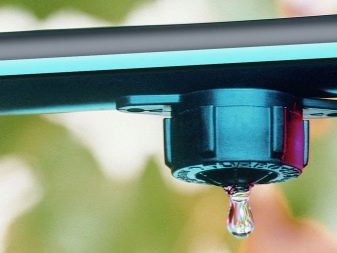
The principle of the mechanism is quite simple:
- a hydraulic cylinder with a liquid is installed on the transom, which, in fact, can be called a thermal sensor;
- when the air in the greenhouse is heated, the liquid expands, pushes the piston and the window opens;
- when the temperature drops, the opposite process occurs.
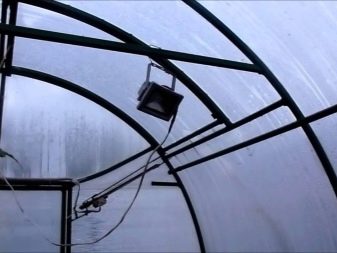
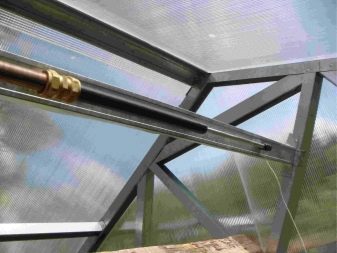
The piston is capable of developing a force of up to 100 kg, which makes it possible to move a window with an area of up to 2 square meters. m. The service life of such a device reaches several years, so the price can be considered quite acceptable. The vents are usually located in such a way as not to cause excessive windage, otherwise the greenhouse can be destroyed in case of strong gusts of wind.
Drip irrigation is a way to deliver moisturein which water is delivered in small portions directly to the root system of the plant. For this, a simple set of tubes, hoses and nozzles is used. Due to this, the required moisture level is always maintained in the soil. In addition, the water has time to warm up to the ambient temperature, which has a good effect on the growth of seedlings.
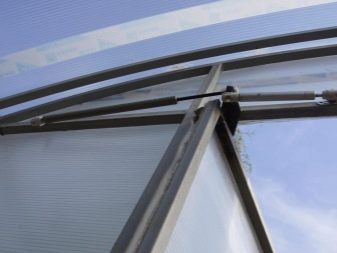
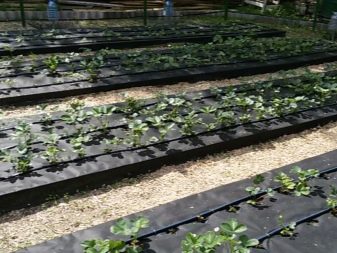
Since the entire irrigation process occurs automatically, the summer resident no longer needs to do it himself. For further convenience, when watering, the same hydraulic cylinder is used as for ventilation, that is, the valve opens when the liquid expands. The main factor is the presence of water in the reservoir, because irrigation is considered automatic as long as there is something to water.
Following Kurdyumov's recommendations, the soil inside the greenhouse should be covered with a low layer of organic material (mulch). Mulching prevents weeds and maintains the required moisture level. Lightweight materials such as straw or sawdust can be used as organic matter to retain heat. This ensures the preservation of the adjusted climate in the greenhouse.
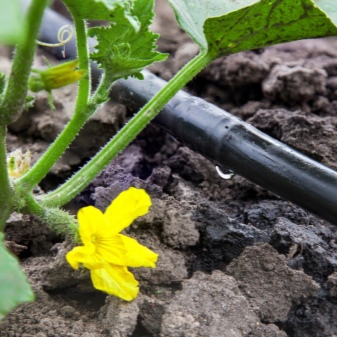

Kurdyumov's greenhouse will help an experienced summer resident increase yields and reduce labor costs for maintaining the greenhouse. Thus, it becomes obvious: there are worthy craftsmen and manufacturers in the Russian Federation who can compete with foreign competitors.
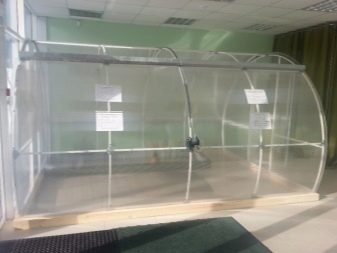

Advantages
Growing vegetables in a smart greenhouse does not require a constant human presence. The owner of the cottage should only plant the seedlings in the ground. The use of automation in the greenhouse economy makes it possible to greatly facilitate the work at the summer cottage. Moreover, the crop can be harvested throughout the year.
Automation allows you to create ideal conditions for managing the microclimate in a greenhouse. Autonomy systems help save time and resources. It is worth noting that the "smart" greenhouse, despite its apparent complexity, has a completely conventional design. Any summer resident familiar with tools can build a greenhouse. After installing an automatic greenhouse control system, the summer resident will be able to feel that the garden plot is not only physical labor, but also a place for outdoor recreation.

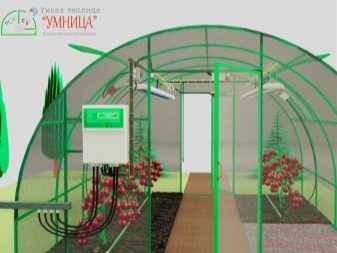
For information on which automation to choose for the greenhouse, see the video below.





























































Maybe I misunderstood something? Is it true that arched greenhouses have more light transmission than straight roof greenhouses? Are you saying this?
The surface of arched greenhouses is less reflective, and therefore more sun gets inside. So, everything is correct.
The comment was sent successfully.